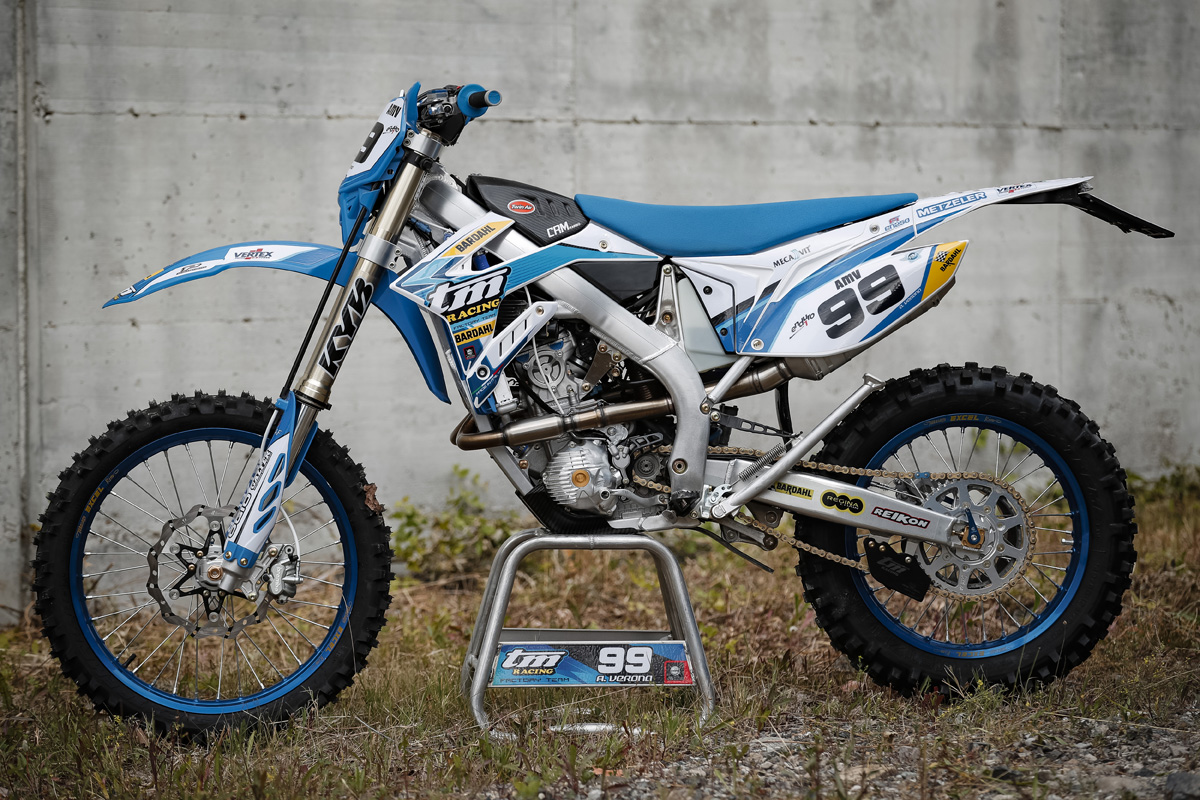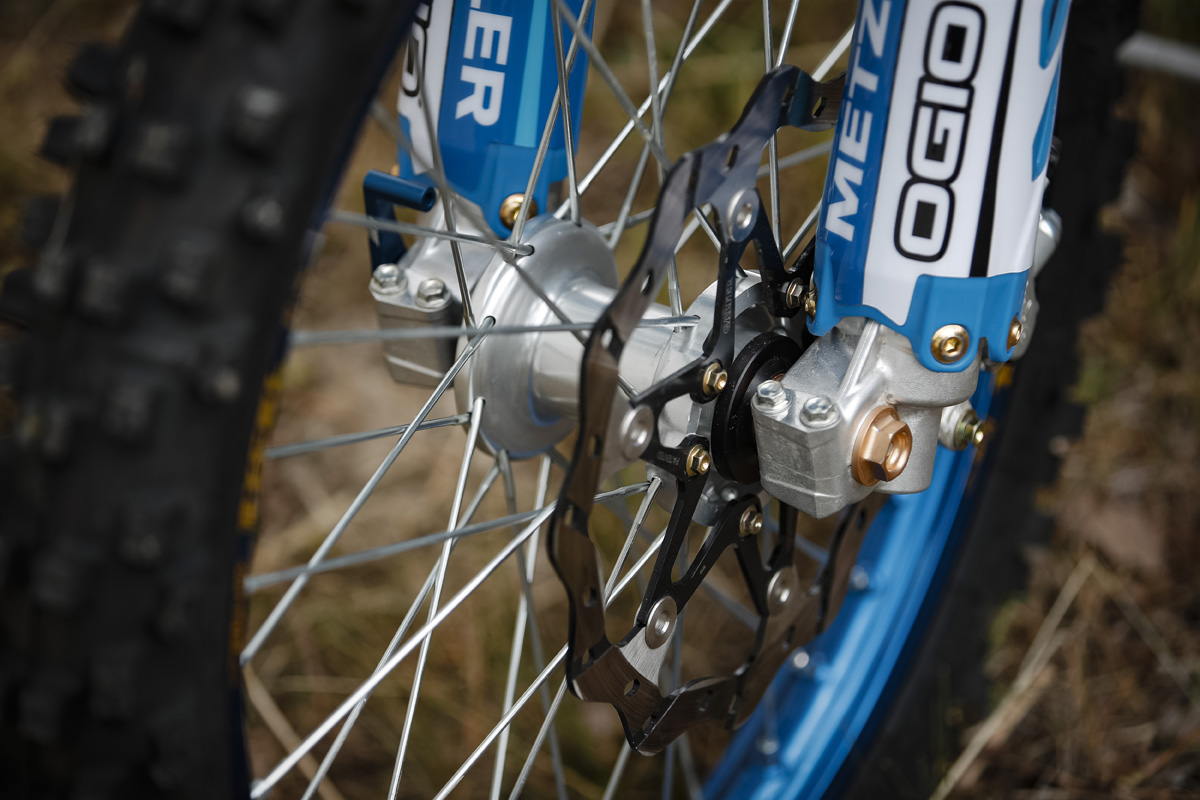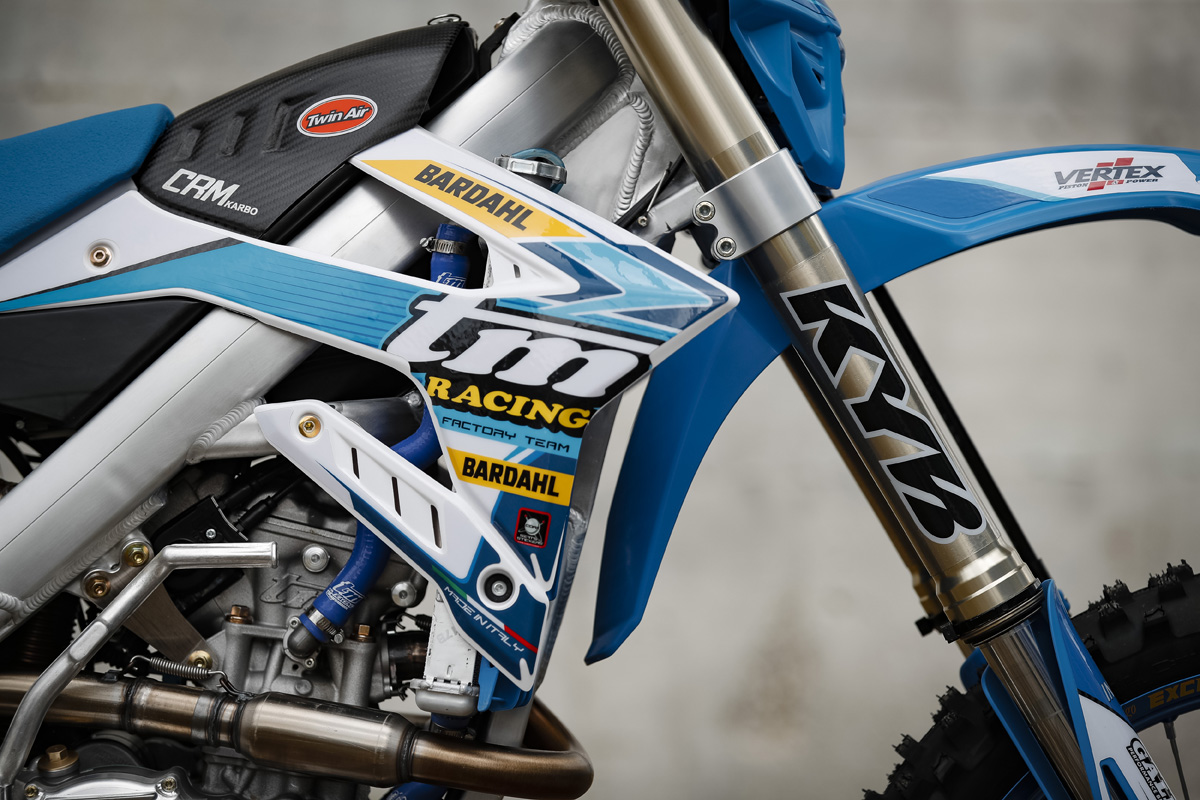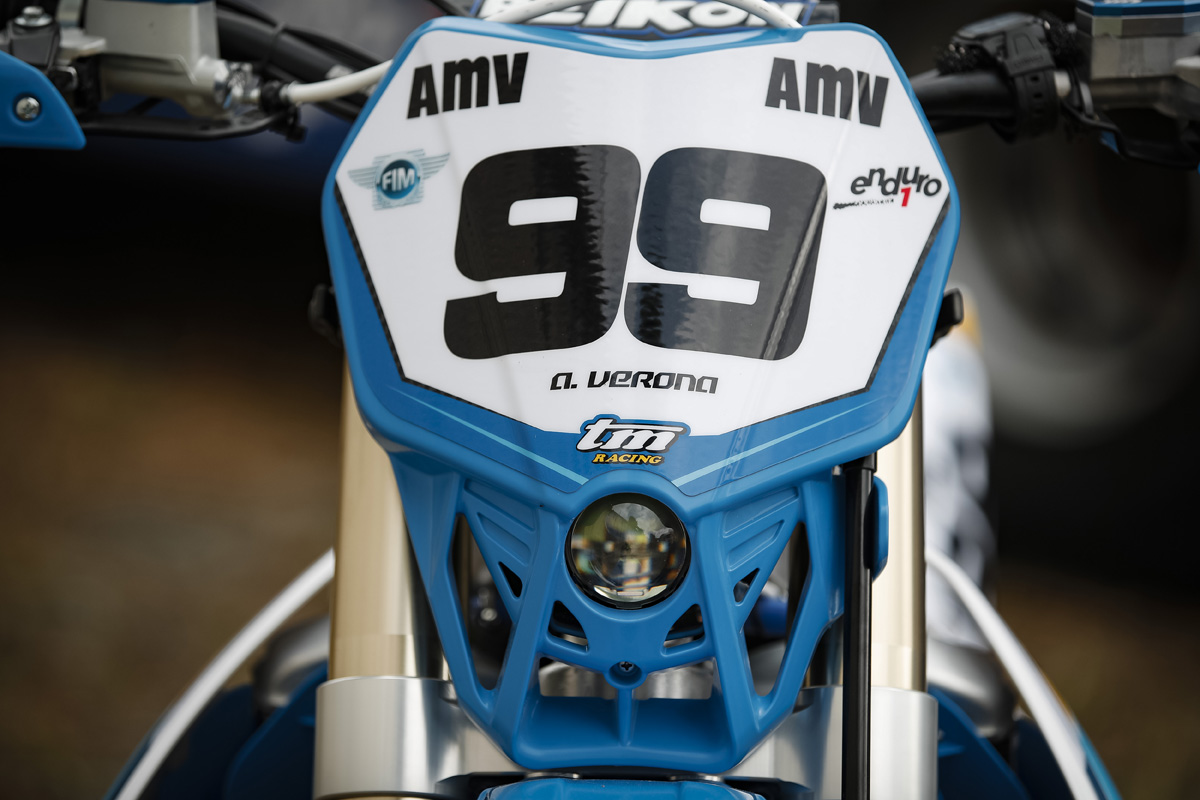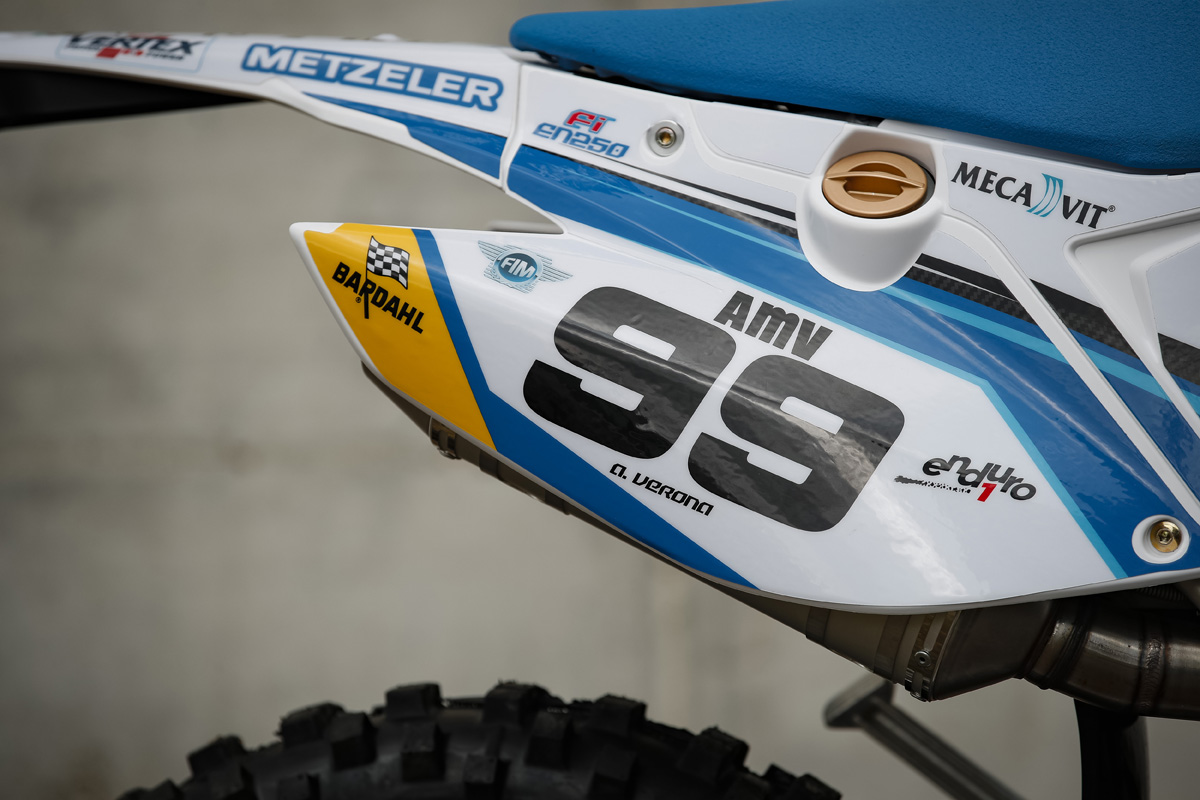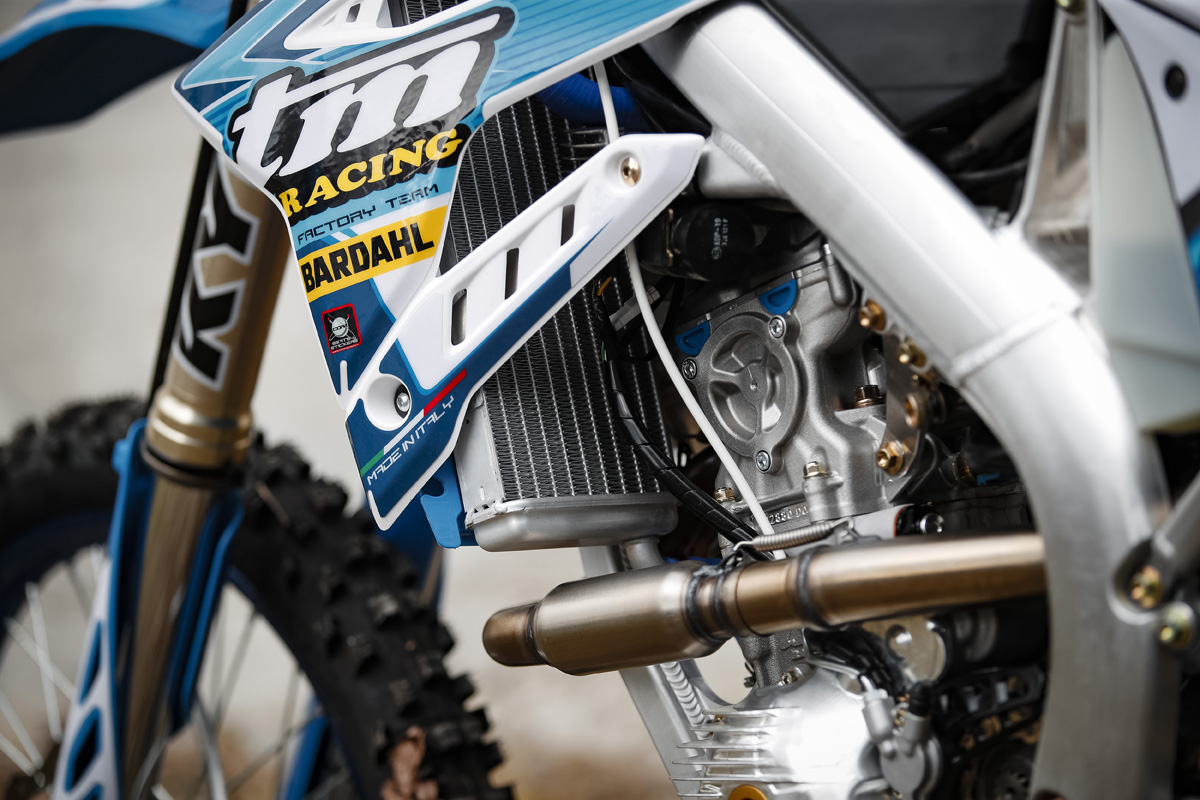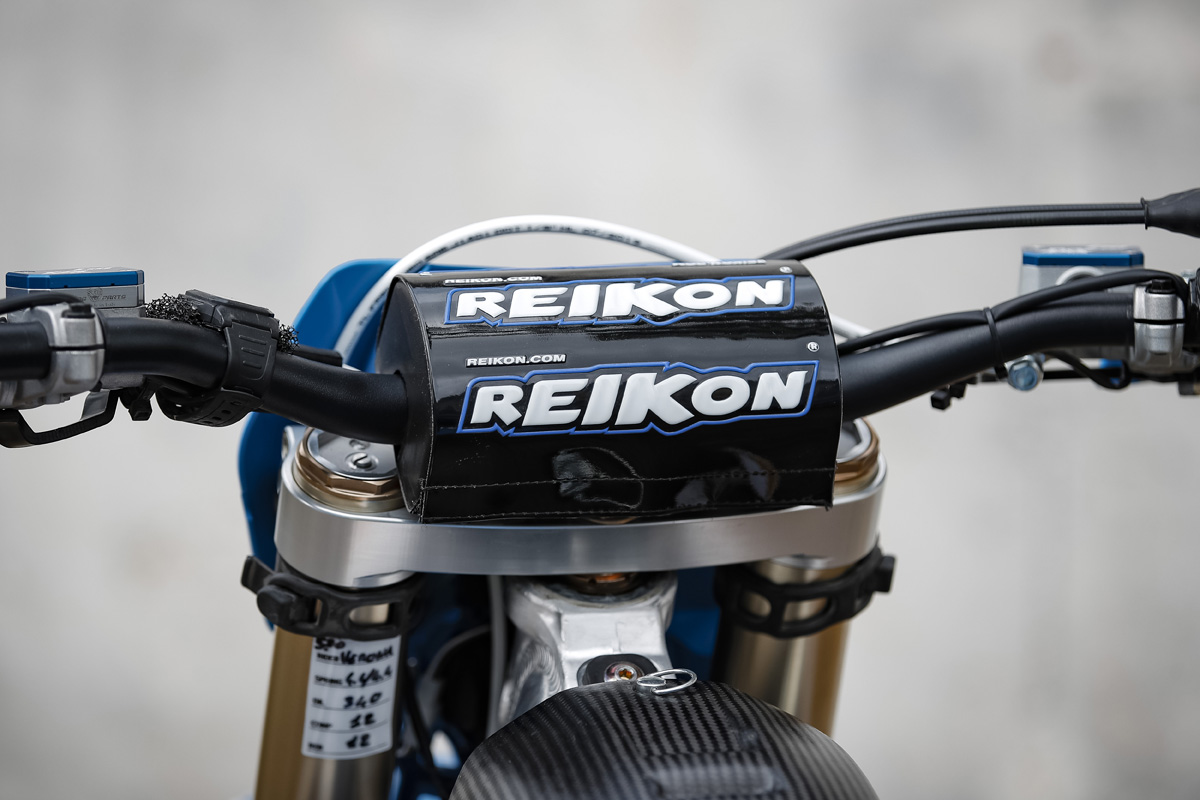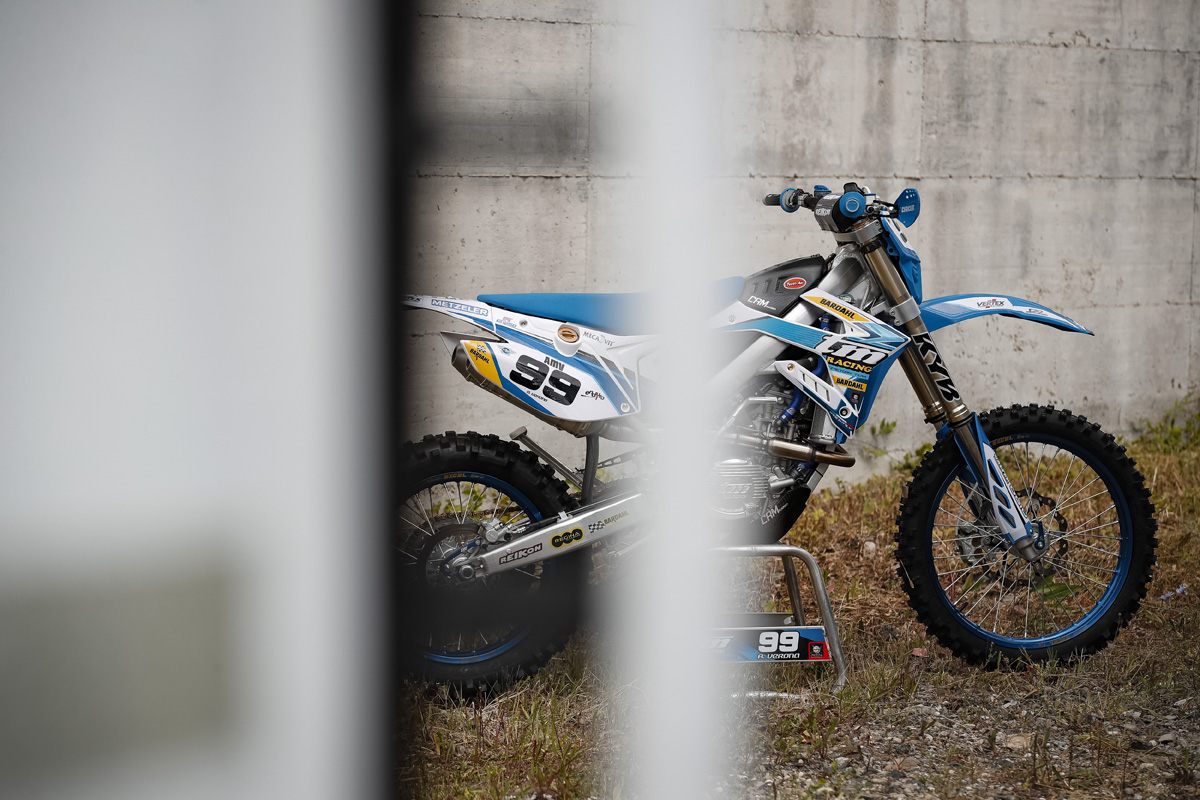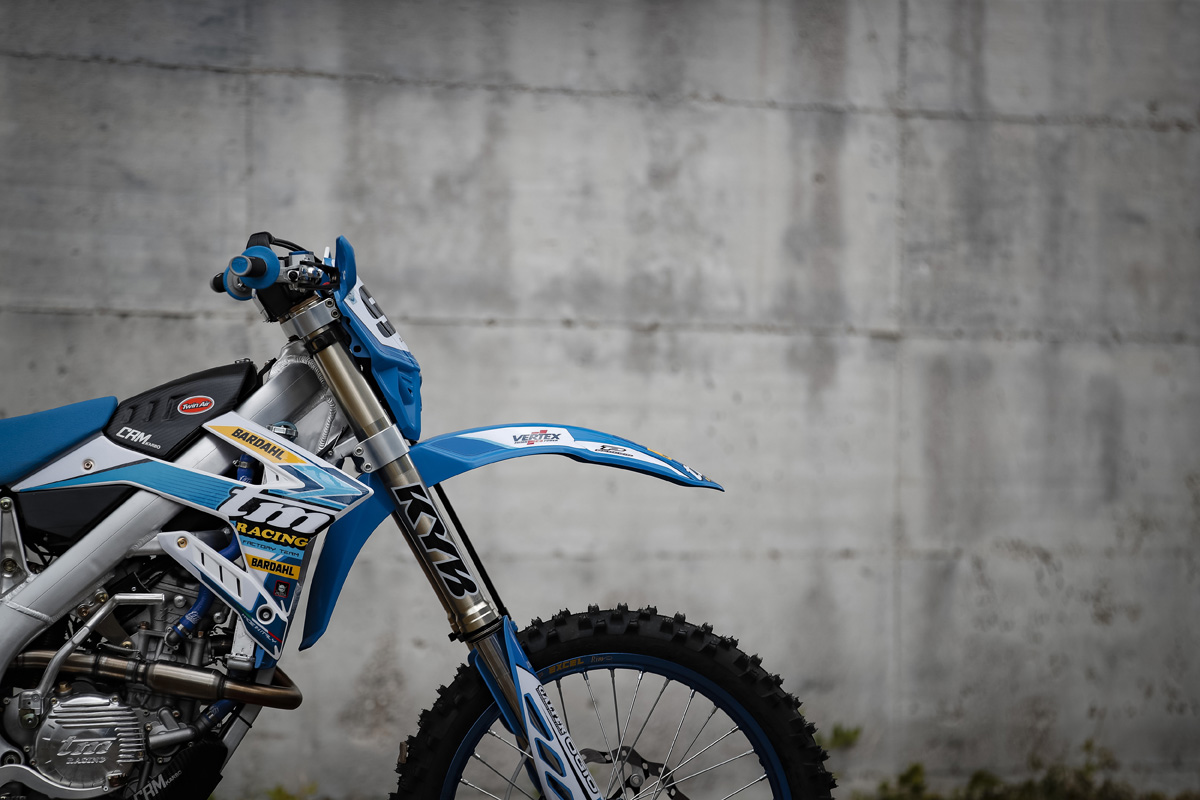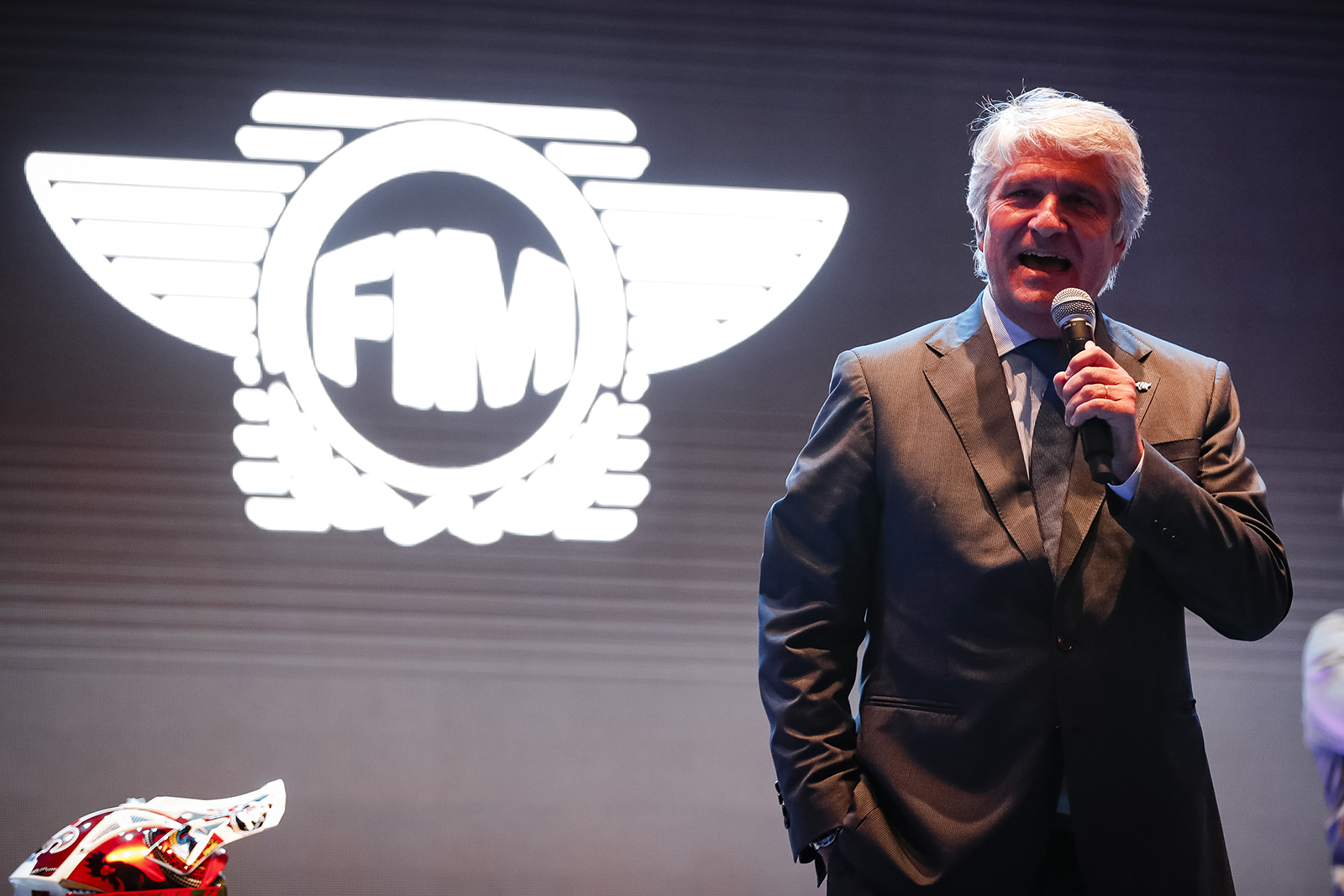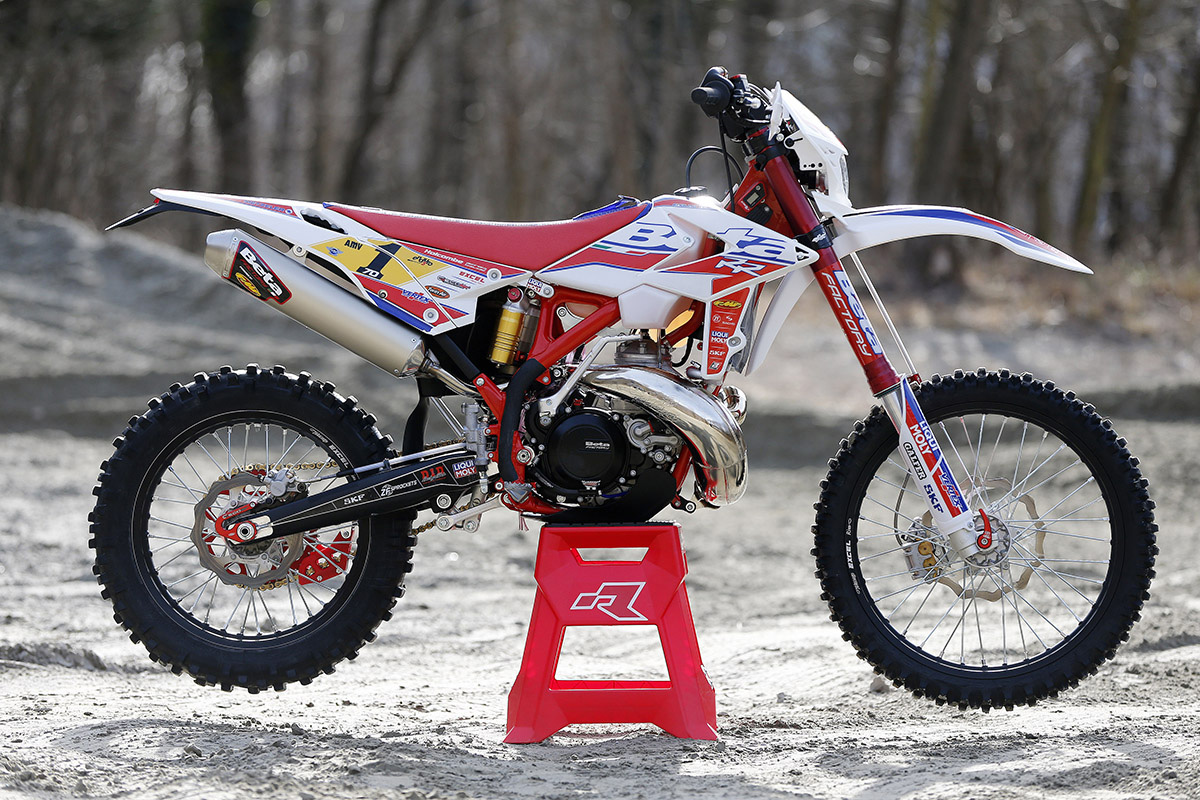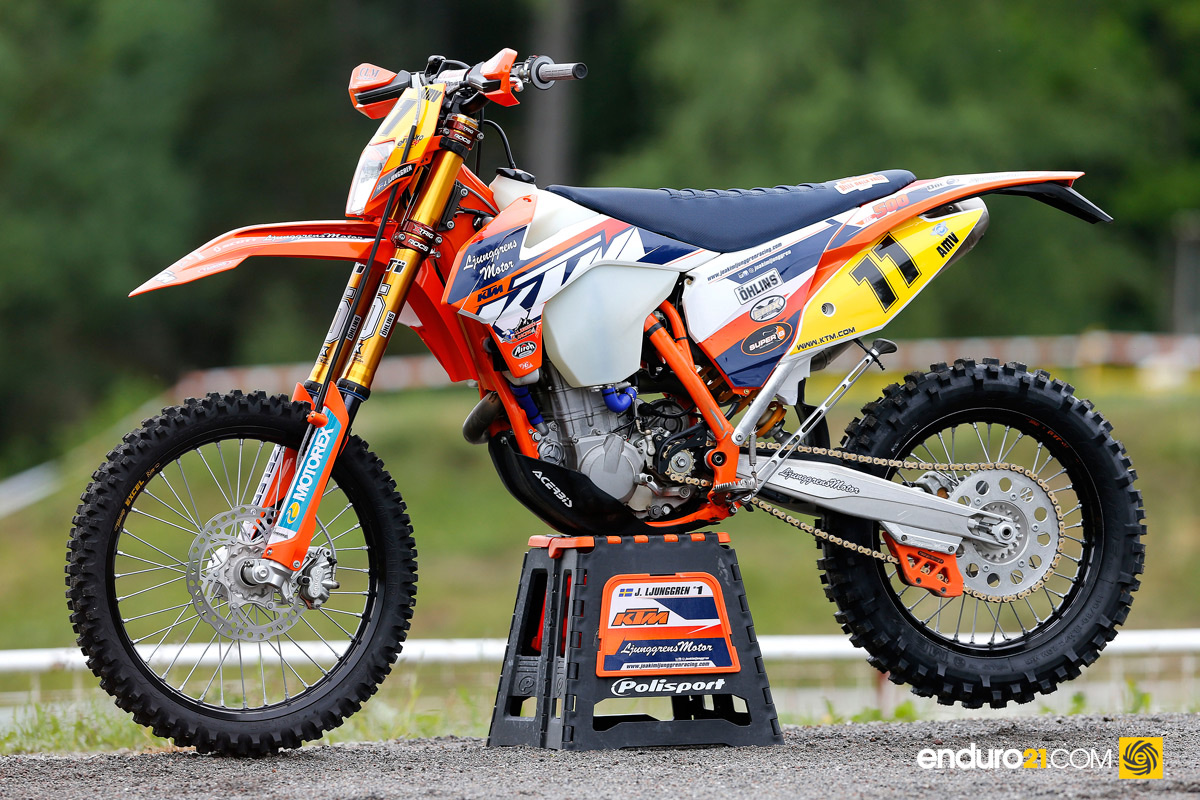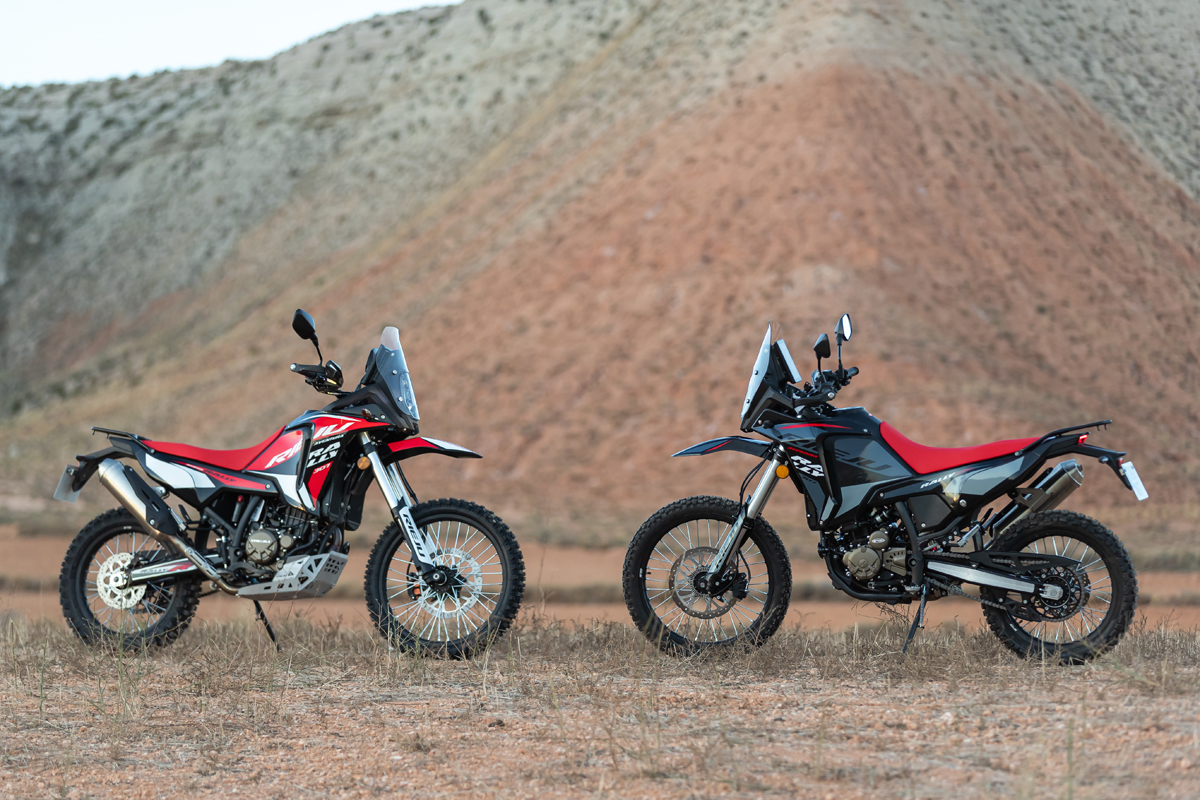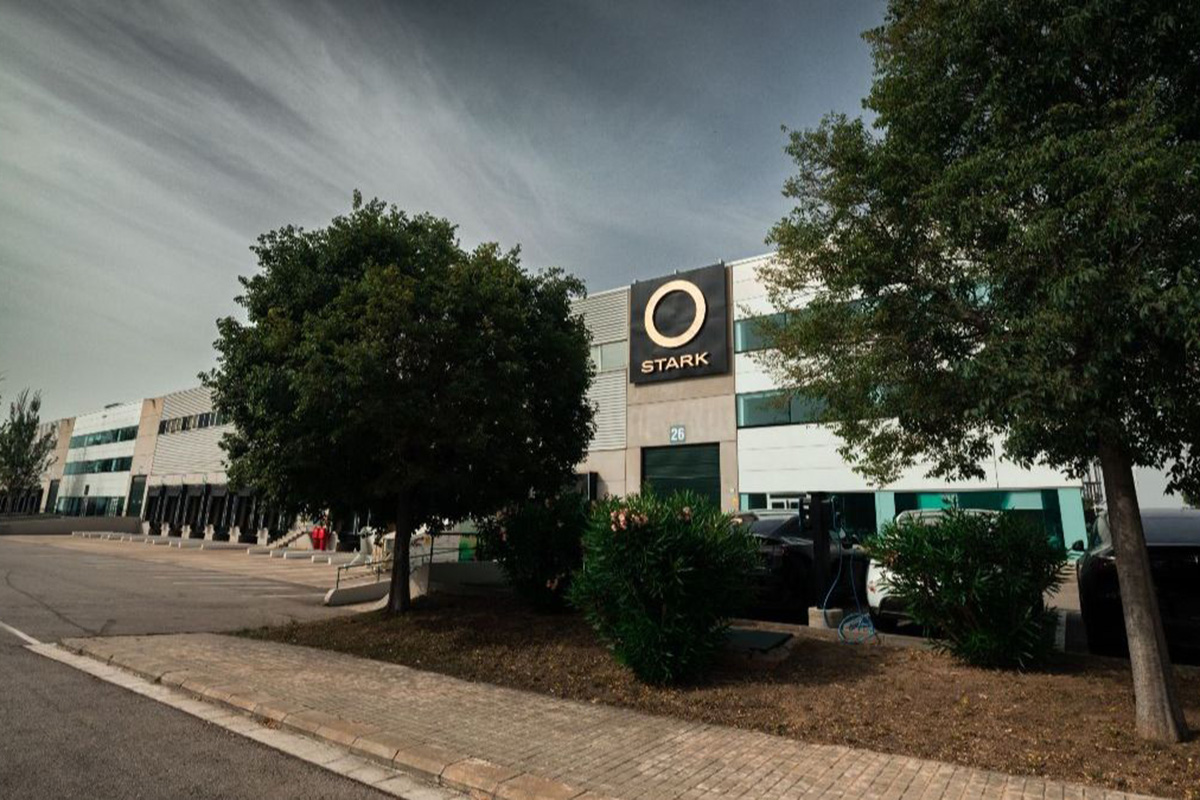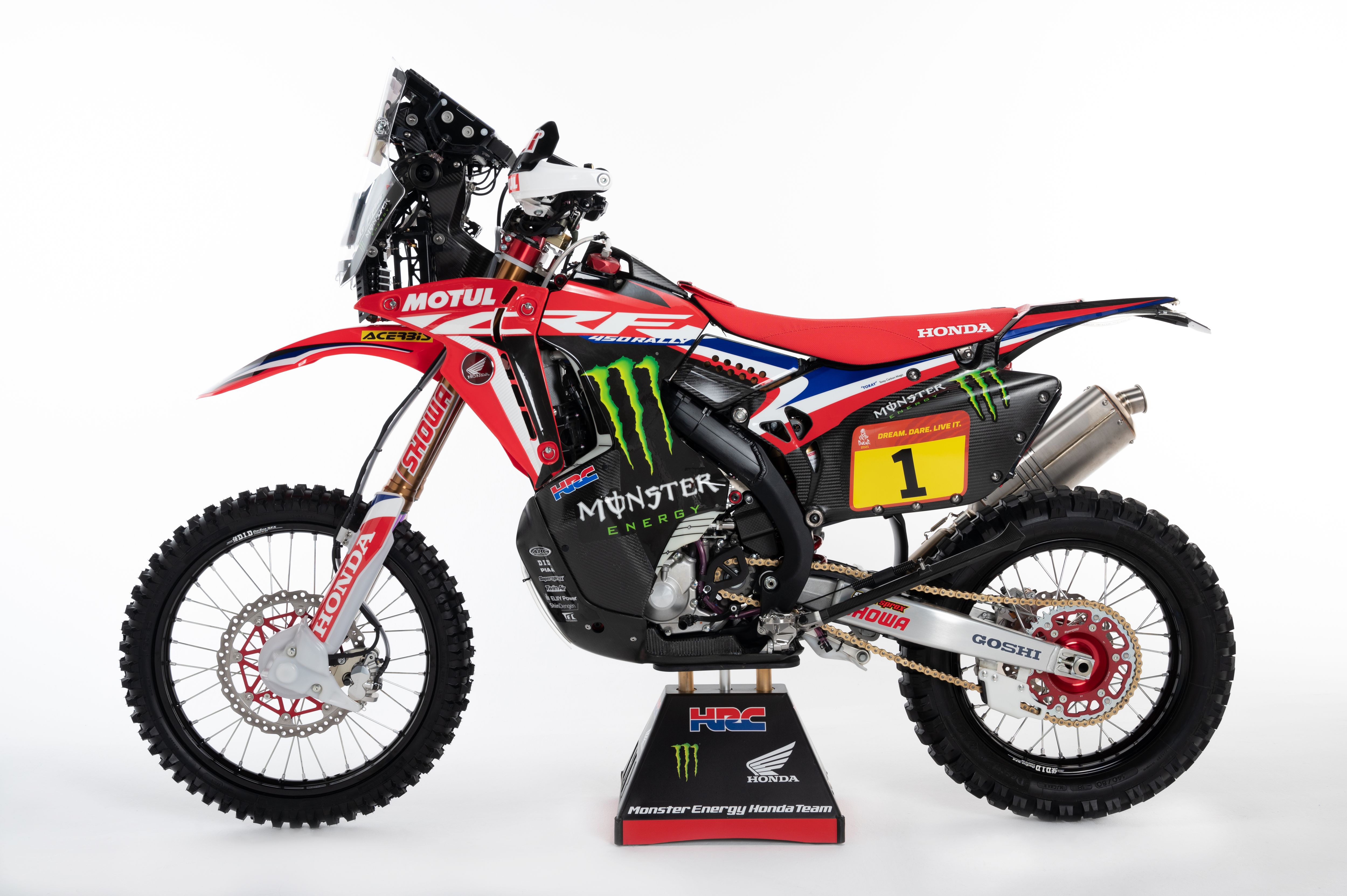Pro Bike: Andrea Verona’s TM Racing EN 250 Fi
The second in our 2020 Enduro World Championship Pro Bike features focuses on Andrea Verona’s hand-built TM Racing EN 250 Fi four-stroke which the Italian took to his maiden senior world title in the E1 class.
Legend has it, back in the 1970s, childhood friends Claudio Flenghi and Francesco Battistelli (“Mr Engine” and “Mr Frame”) set out to create their own dirt bikes based on MX chassis’ and two-stroke go-kart engines. Italian manufacturer TM have come a long way since then with world championship race teams competing in EnduroGP, MXGP, MotoGP and Supermoto as well as a first class reputation within karting paddocks.
The beauty of the Pesaro factory is that early hand-crafted ethos still rings true to this day with bikes that are “designed, engineered and built in-house,” and “crafted from passion not a balance sheet”. TM’s words, not ours.
Proving their bikes can compete at the very highest level, Andrea Verona has ridden a crest with the TM EN 250 Fi four-stroke on which he took the ISDE Junior World Team Trophy victory at the end of 2018, the Enduro Junior World Championship in 2019 and then immediately backing it up in his rookie senior EnduroGP year with the E1 crown.
As the 2020 season drew to a close, the TM factory race team were already set on some major changes including TM Boano Factory Enduro Team taking over the reins. While the factory team was still ‘in-house’, we spoke to the outgoing team manager Luca Cherubini, plus the new E1 World Champion Andrea Verona himself, to find out more…
How factory is a factory TM?
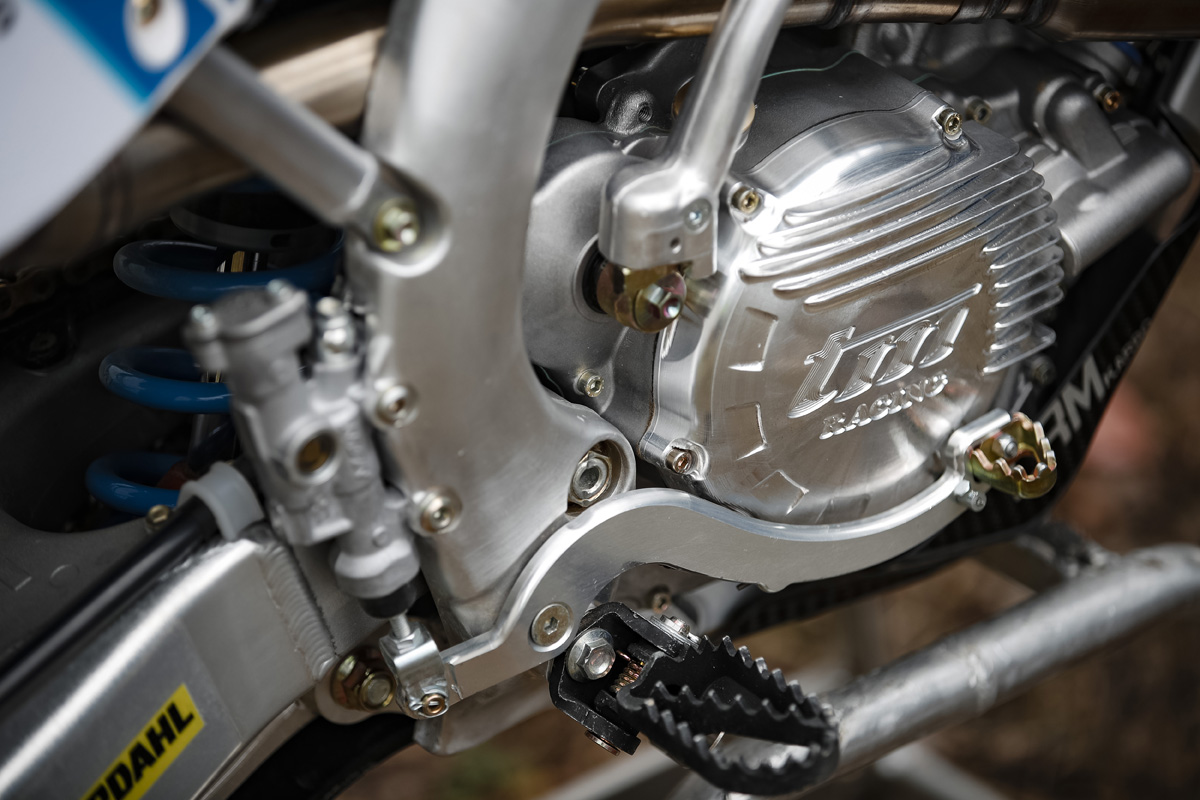
“In 2019, the 250 Fi was brand new,” explains Luca Cherubini about the bike which they continued to develop over winter heading into the 2020 season. “We made some improvements but overall the bike is completely standard – frame, engine, suspension, CDI…everything.” Some bikes are more standard straight out the factory than others…
This is the third year Verona has raced with the 250 four-stroke, despite trying the 250 2T at the end of 2019. “I am used to it and I feel good with it. This year (2020) is my first year in the Pro class, the big championship, so I had to focus on my riding and try to improve my skills. To change the bike as well was another thing.”
Turning to the bike however, Andrea says the standard bike really suits him as it comes out the factory door. “I like it and really only make some small adjustments but nothing major because it is good already.”
TM's 250cc power plant
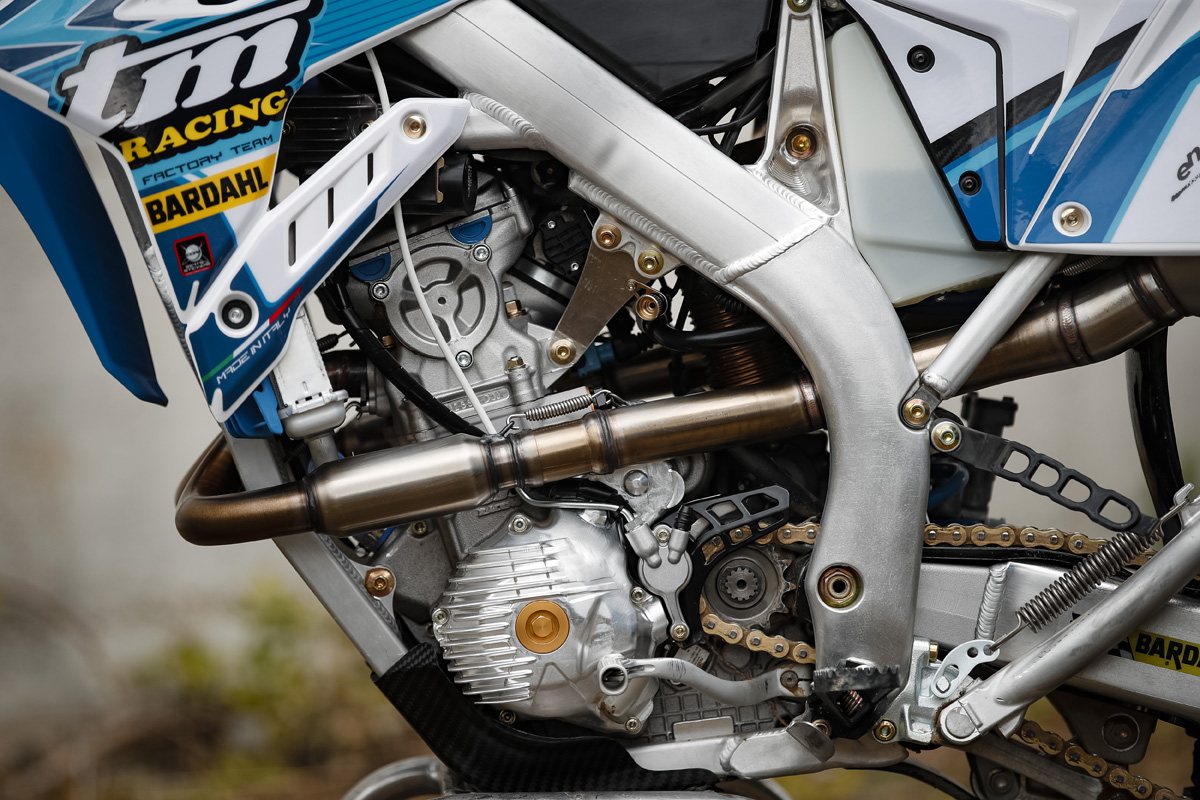
TM are a manufacturer famed for their powerful two-stroke engines and the fuel injected four-strokes are a relatively new from the Italian factory. Both Verona and Cherubini point out the factory race bike engine is standard, “all standard, standard compression and everything. The only thing is the setting for the fuel injection and the mapping is developed for Andrea,” Says Luca.
Andrea explains: “I don’t want the rpm to go down when you close the throttle, I want it to stay up a little and not die. So the mapping is a little different to standard. In the slow speed tests, if the engine runs too low it can die, stall, so I prefer to have the rpm not close too quickly.”
No stalling
Verona’s bike has two mapping control options to choose from on the fly via a handlebar map switch. “First map is normal,” he says, “the second map is like traction control, more or less. When the back wheel starts to spin the electronics control the power to help the wheel stop spinning. I use it in some situations where it is slippery like wet rocks or a wet extreme test with many obstacles but not in the cross test when I’m full gas!”
Speaking about stalling, unlike some modern four-stroke bikes, TM run a kickstart plus an electric start on Verona’s race bike. They’re happy with the little extra weight to be safe in the knowledge a dead battery doesn’t mean the end of a race.
The power this factory 250 engine delivers is, “perfect for enduro, strong at the bottom and strong up top but at the same time smooth from the bottom to the top.” But what about the engine internals? “The only difference between my bike and the one you can buy is we change the parts between races for reliability and perfect performance,” Says Andrea.
Stock exhaust system works best
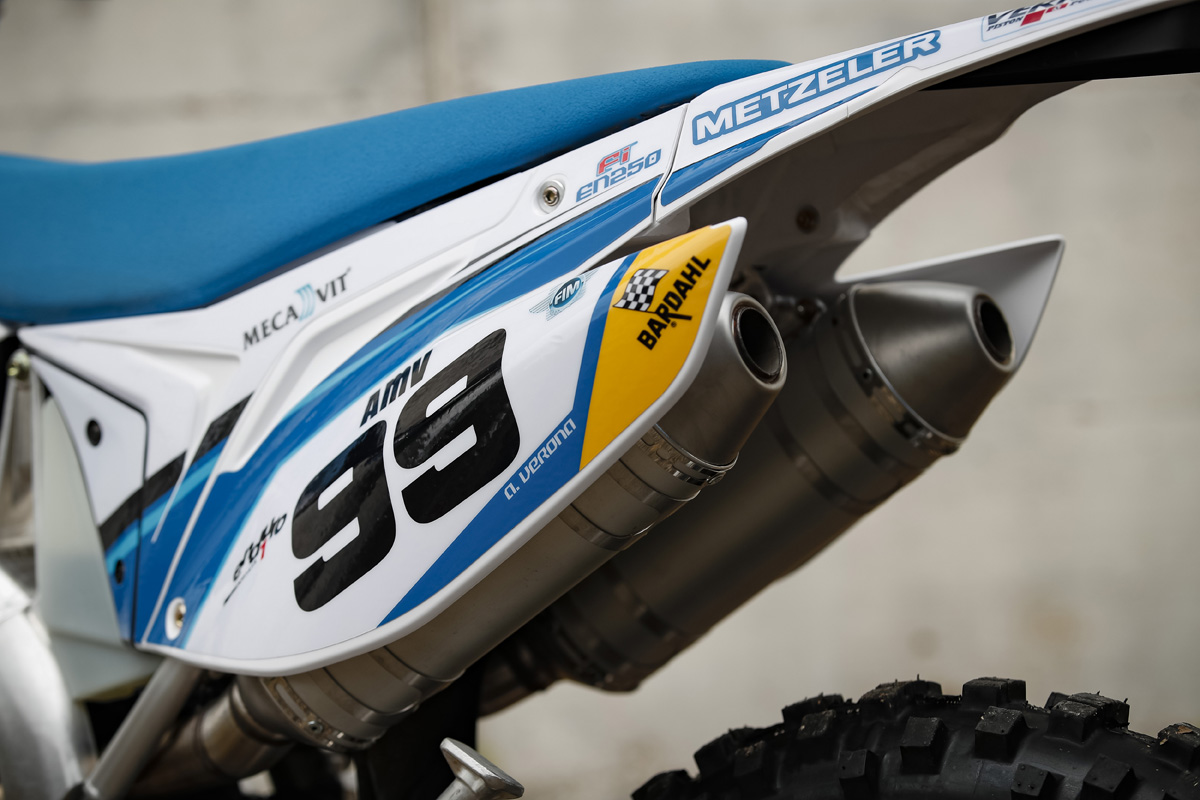
“We tried different exhaust systems for this season,” says Verona, “but in the end we went back to the older, standard system so it is the same as 2019.”
Andrea says he prefers to have more power at the bottom, which the stock exhaust system dishes up. “In the slower enduro tests or the extreme tests you need some power at the bottom and I like the smooth progression through the rev-range.”
TM’s design is unconventional in that it has the air box on top of the engine and fuel tank down under the seat. The airbox is one of the areas they changed for 2020 with a new air intake, “before the butterfly there is a small change”, says Verona without giving too much away. The underseat tank meanwhile is very much part of the unique feeling the TM bikes have to ride with a lower centre of gravity and the fuel filler cap is behind the rider’s left leg.
Playing with gearing
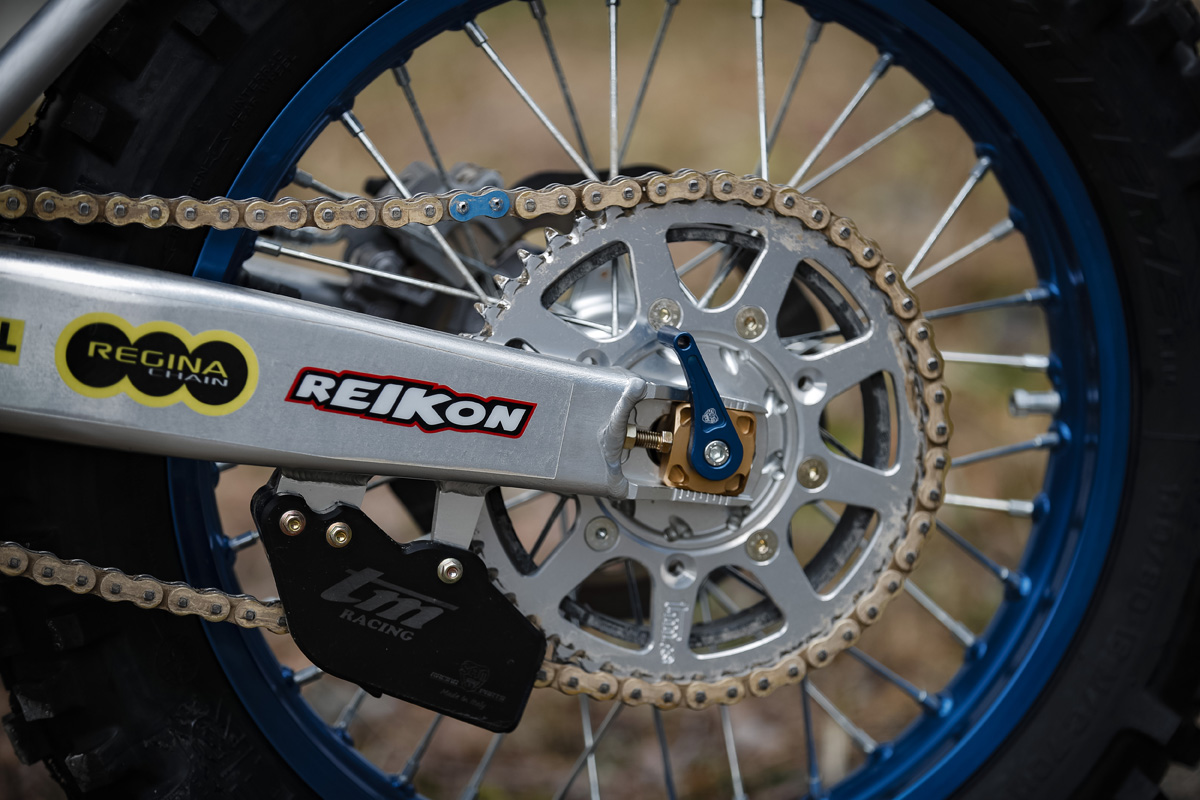
When you look around this factory race bike you will not see many parts from a third-party supplier. Almost everything you see is designed and built in-house like, for example, the rear sprocket. Speaking about the final drive ratios, Verona says, “Last year we did some experiments with the sprockets, we went down two teeth at the back sprocket to 48 with 13 at the front.”
KYB forks and a home-grown TM shock
The TM Racing factory race bikes run 48mm KYB forks and, yet another homemade part, their own rear shock. “We run tests pre-season,” says Cherubini, “to get the correct base setting. But Andrea has been with us for a number of seasons now and he knows the bike well. He is young but has a lot of experience with the Kayaba forks so it is just a question of arriving at a setting which works for him.”
“I run the stock parts but the setting is made for me by the suspension guy in the factory,” Verona tells Enduro21. “I usually like the suspension soft at the start, for feel at slower speeds, but when you go faster, it becomes stronger so that when you hit things, the suspension feels strong.”
Andrea continues: “Overall, compared to other riders, maybe my bike is a little softer but I think it is in the middle area for the setting. For enduro you need to have a bike good everywhere so I like it to work this way. The back is a little low normally, the sag setting is 40mm.”
Personal touches

CRM Compositi make some of the very few non-TM parts littered around the little 250. Their Teflon sump guard with linkage protector looks tailor-made and the carbon airbox cover is another part available from TM’s special parts catalogue. Check-out the dirt deflectors under the footpeg pivots or the additional Teflon chain ‘catcher’ between the rear sprocket and spokes on Verona’s to prevent the chain from dropping down and snagging or breaking the spokes.
Front and rear wheel axles have quick-release lugs for faster wheel changes, made by SAM Racing Parts. There’s also a pretty neat SAM rear brake caliper support, which keeps the rear brake caliper in place when you remove the rear wheel.
Most riders have their own small and personal touches and for Andrea that means a 15mm higher seat than standard – he’s pretty tall. Handlebars are by Reikon, model 9012, which is an 83mm height and 10° angle.
Overall Andrea’s preferred lever set-up is pretty flat at the handlebars but the rear brake lever is a little higher than some riders prefer. “I like that when I touch it, it brakes immediately and does not go down too much to make it work.”
Galfer goodness

Last but not least are the stoppers on the TM Racing factory missile. Floating Galfer steel front brake disc (270mm) is bitten by a Nissin master cylinder and Brembo caliper. The solid rear Galfer disc is 245mm with a Nissin master cylinder and caliper.
One further difference to the standard EN 250 Fi are the brake and clutch master cylinders which are, “a little bigger to have more oil inside”, Andrea explains. Basically, they fit the larger capacity to help stop the oil overheating during heavy use.
It's worth pointing out again that this bike, any standard enduro model from TM, arrives in pretty high spec with some nice touches. That hand-built notion is appearing to many people and without doubt you don't have to ride one for long to feel how good their chassis' work.
Overall it is a fascinating machine to look at and garner in some detail the changes to set-up the team and Verona himself make to this multi-time Enduro World Championship winning machine.
Photo Credit: Enduro21/Andrea Belluschi
We need your support
If you’ve enjoyed this article, if you’ve found it informative, interesting, entertaining even, please support us.
We want to continue doing what we do, to the best of our ability, serving the enduro and off-road community.
Please consider a donation, every little helps…
Thank you.




